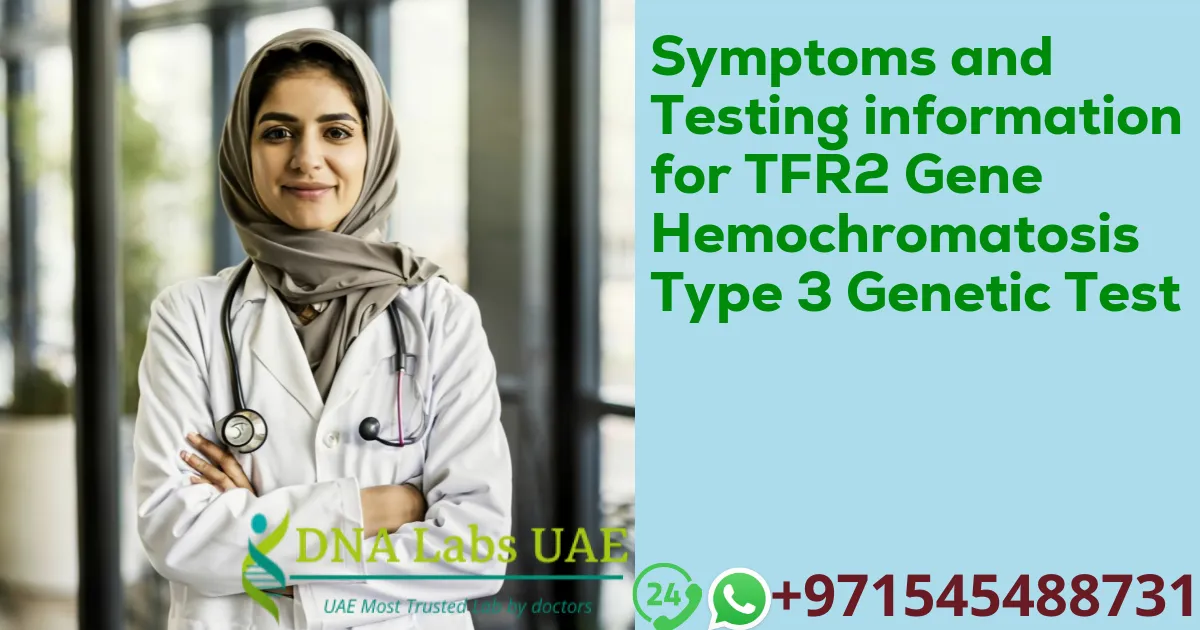Hemochromatosis is a genetic condition characterized by excessive absorption of iron from the diet, leading to a buildup of iron in the body’s organs. Among the different types of hemochromatosis, Type 3, caused by mutations in the TFR2 gene, is less common but significant. Understanding the symptoms and seeking timely genetic testing can be crucial in managing the condition effectively. DNA Labs UAE offers a comprehensive genetic test for TFR2 Gene Hemochromatosis Type 3, priced at 4400 AED, to aid in the diagnosis and management of this condition.
Symptoms of TFR2 Gene Hemochromatosis Type 3
The symptoms of TFR2 Gene Hemochromatosis Type 3 can be subtle in the early stages but become more pronounced as iron accumulation increases. Recognizing these symptoms early is key to preventing organ damage. Some of the common symptoms include:
- Fatigue: Persistent tiredness not relieved by rest is one of the earliest and most common symptoms.
- Joint Pain: Especially in the hands and knees, which can sometimes be mistaken for arthritis.
- Abdominal Pain: Pain in the upper right abdomen, near the liver, is a symptom that may indicate liver involvement.
- Skin Color Changes: The skin may take on a bronze or grey color due to the excess iron.
- Diabetes: Iron buildup can damage the pancreas, leading to diabetes.
- Heart Problems: Irregular heart rhythms or congestive heart failure can occur due to iron deposition in the heart.
- Sexual Dysfunction: Men may experience impotence, while women might have irregular menstrual cycles.
It is important to note that symptoms can vary greatly among individuals and might be influenced by other genetic and environmental factors.
The Importance of Genetic Testing for TFR2 Gene Hemochromatosis Type 3
Genetic testing plays a pivotal role in diagnosing TFR2 Gene Hemochromatosis Type 3. It helps in confirming the diagnosis, especially in individuals who have a family history of the condition or exhibit symptoms. The test offered by DNA Labs UAE is specifically designed to detect mutations in the TFR2 gene, providing a definitive diagnosis and allowing for the implementation of a tailored management plan.
Management and Treatment
While there is no cure for hemochromatosis, early diagnosis and treatment can help manage symptoms and reduce the risk of complications. Treatment often involves:
- Phlebotomy: Regular removal of blood to reduce iron levels in the body.
- Chelation Therapy: In cases where phlebotomy is not suitable, medication can be used to remove excess iron.
- Dietary Changes: Limiting iron-rich foods and avoiding vitamin C supplements, which can increase iron absorption.
Regular monitoring of iron levels and organ function is also critical in managing the condition effectively.
Conclusion
TFR2 Gene Hemochromatosis Type 3 is a genetic condition that requires timely diagnosis and effective management to prevent serious health complications. Recognizing the symptoms and undergoing genetic testing, such as the one offered by DNA Labs UAE for 4400 AED, is crucial. For more information and to schedule a test, visit DNA Labs UAE.



